Shimano appears to be developing a radical new rear derailleur, with a three-pulley design that could wave goodbye to clutch adjustment, according to a patent application filed by the Japanese brand.
With a new Shimano 105 mechanical groupset rumoured to be due soon, a new GRX line-up overdue and not a peep from the mountain bike side, could this patent application hint at Shimano’s plans?
The patent describes a rear derailleur tucked in closer towards the cassette with three pulley wheels.
In the patent, the chain is routed through the pulley wheels in the opposite direction to a conventional derailleur.
The chain first heads to the base of the lower pulley wheel, before reaching the upper pulley wheel. Both of these pulleys are toothed.
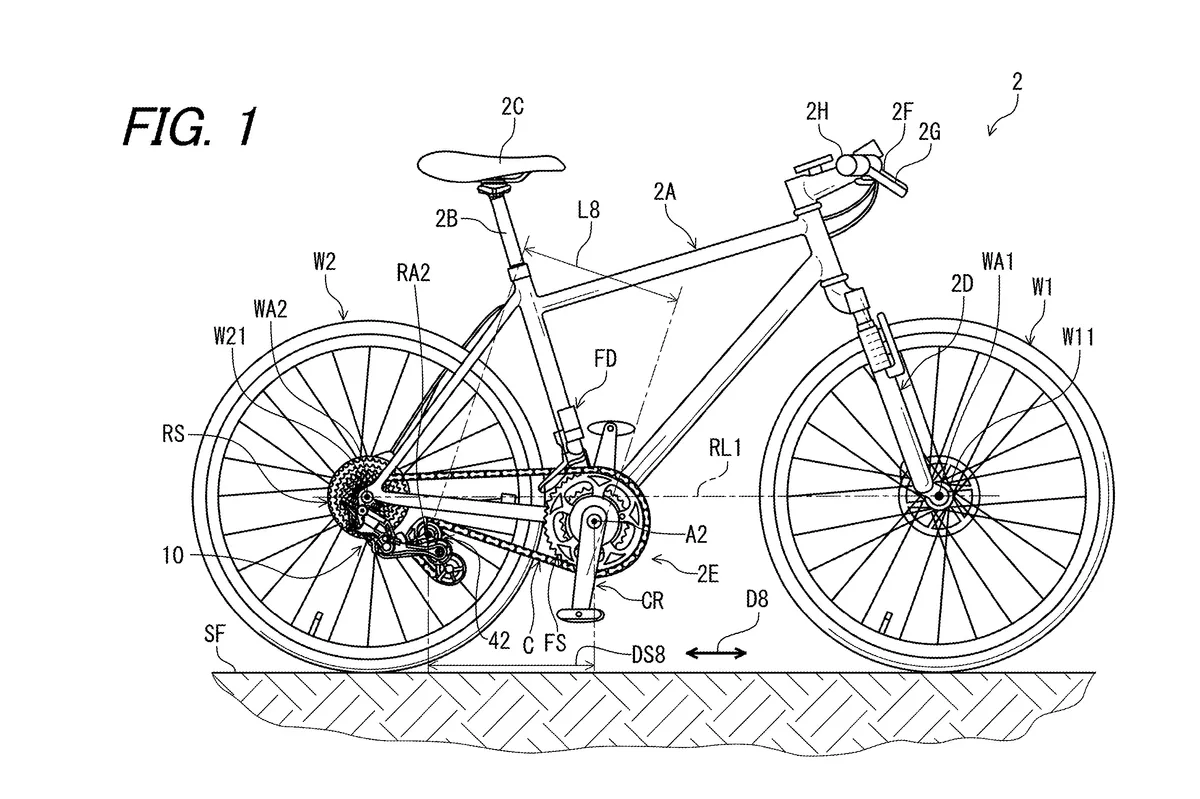
A third non-toothed pulley wheel sandwiched in between the two acts as a guide or tensioner to keep the chain in place.
This isn’t the first time a brand has developed a rear derailleur with three pulley wheels, with the ill-fated Suntour XC perhaps the most notable example.
Suntour’s derailleur was designed to handle larger cassette sprockets without having to use a longer cage (as would be necessary with the chain routed conventionally).
By routing the chain in the opposite direction, could Shimano have cracked the code of this design? Might the brand be looking to introduce even larger cassette sprockets to justify the design? If so, on what kind of bike might it be used?
Goodbye clutch adjustment?
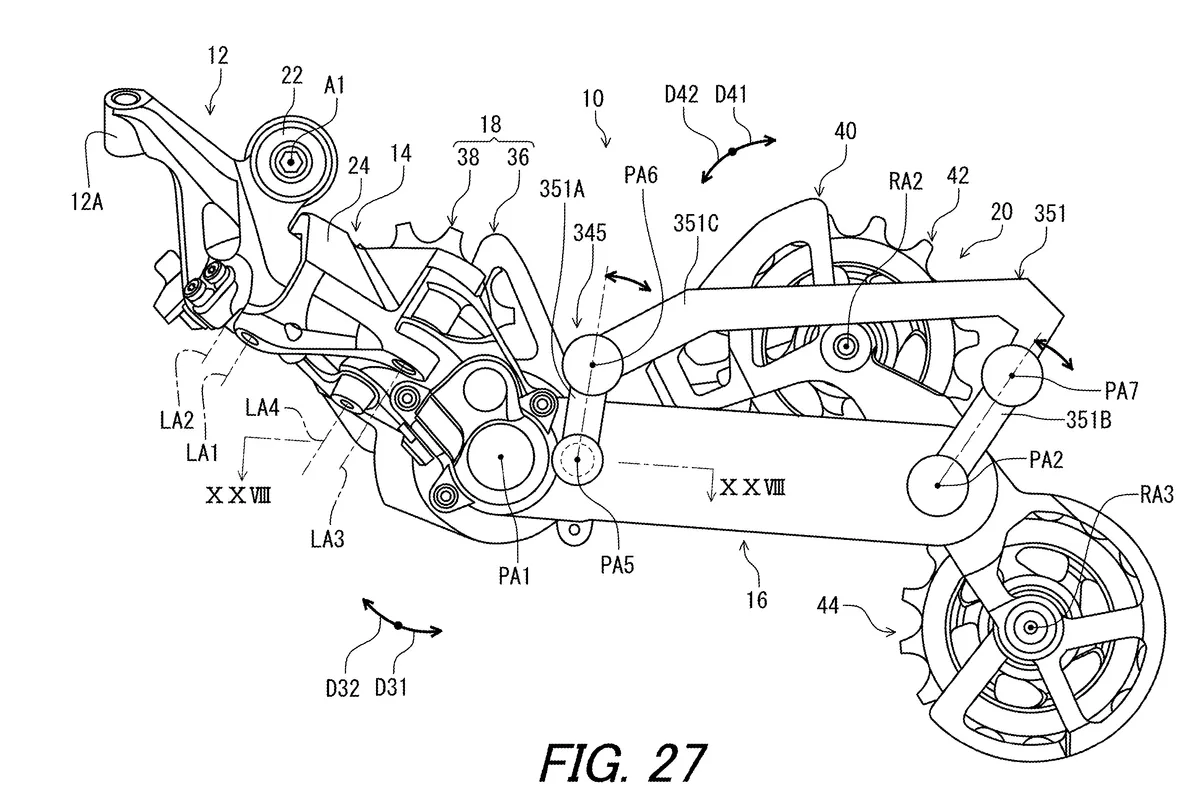
Looking closely at the patent illustrations, it appears Shimano may be updating the design of the derailleur’s clutch mechanism.
A clutch holds the chain under greater tension and reduces any slapping on the chainstay. It also helps hold the chain in place when using a 1x drivetrain.
The patent portrays a clutch mechanism, similar in appearance to the current design found on the brand’s mountain bike rear derailleurs.
However, there doesn’t look to be a switch to control this.
Being able to switch the clutch off can be advantageous on smooth terrain, resulting in crisper shifting.
Shimano might want to drop this if it's a mountain bike derailleur though, given a rider is more likely to disengage the clutch on gravel or road, but leave it always-on on a mountain bike.
The brand might instead opt for a similar system to SRAM’s Cage Lock so the clutch can only be switched off if you want to remove the rear wheel.
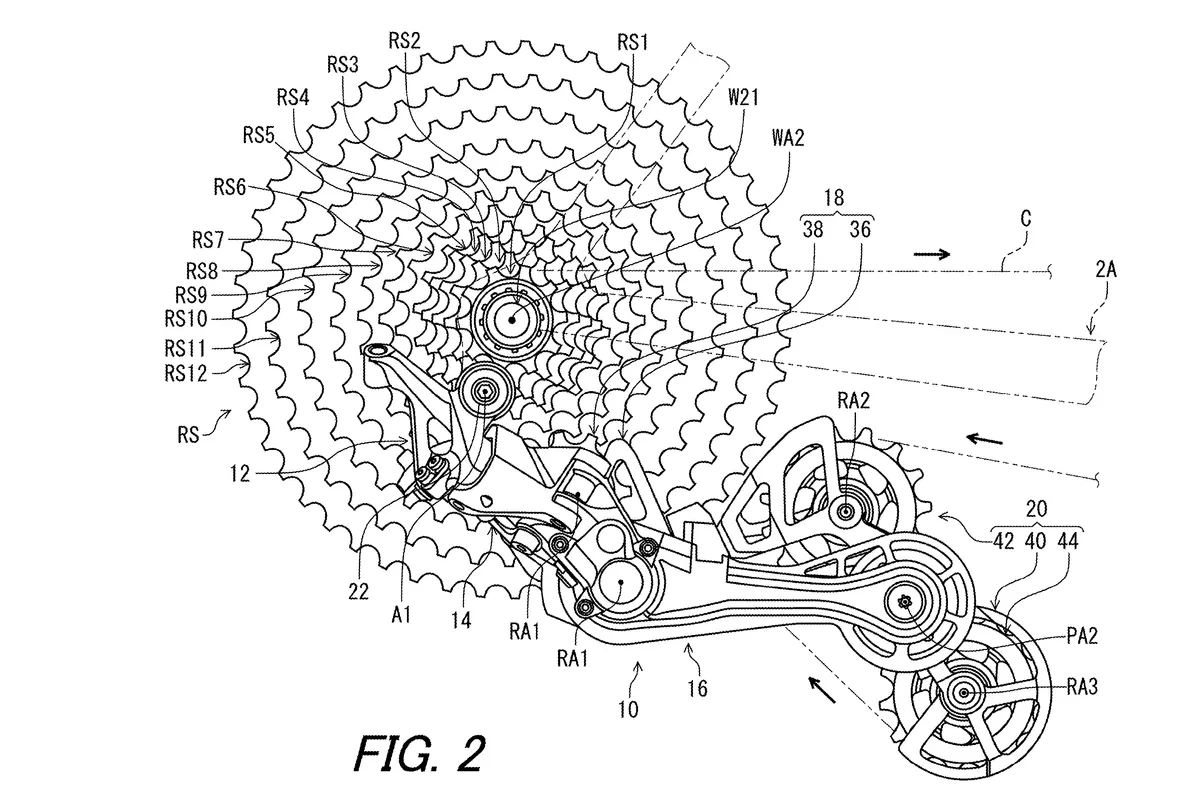
The revised, tighter routing of this new rear-derailleur design presumably also puts the chain under more tension, reducing noise from the chain slapping the driveside chainstay.
The three-pulley derailleur is also considerably shorter than a conventional derailleur.
This will likely decrease the likelihood of damage in an impact, with a reduced risk of the derailleur ripping off from a ground obstacle.
This might also enable Shimano to run the derailleur with cassette sizes greater than 51t, as found on its current generation of mountain bike groupsets.
SRAM’s current generation of Eagle drivetrains use a 52t largest sprocket, so it’s likely Shimano would want to offer at least an identical or greater possible range.
A new XTR rear derailleur?
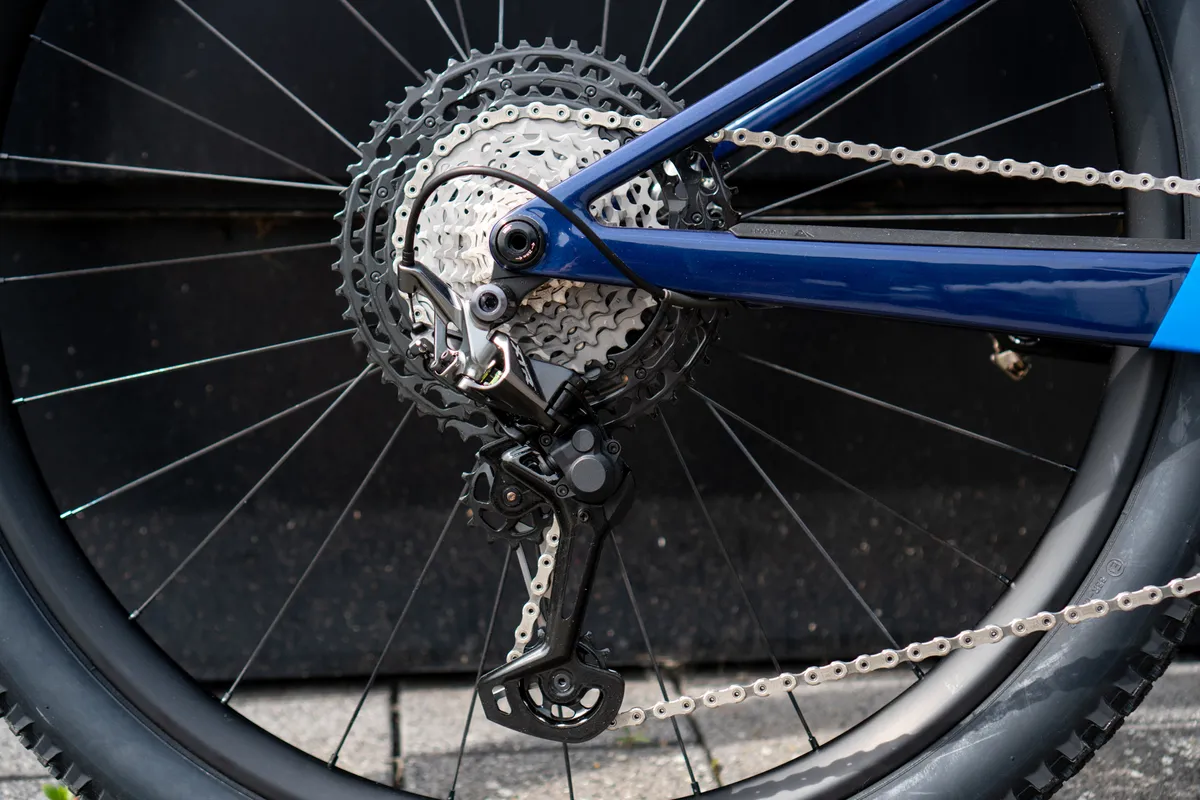
In the patent description, Shimano refers to the design favouring “uneven terrain”.
This suggests the rear derailleur is intended for mountain or, possibly, gravel bike use.
It would be most logical for this rear derailleur to be destined for a mountain bike groupset, given this is where a chain is subject to the most stress compared to gravel or road riding.
Because XTR is Shimano’s flagship mountain bike drivetrain, the design would almost certainly debut at the highest tier first. Historically, new technologies found on flagship groupsets then trickle down to lower tiers over time.
Once proven on mountain bikes, the derailleur could then be destined for gravel.
It’s unlikely the derailleur will debut on road bikes, given chain slap isn’t as significant a problem there.
Taking the limelight from SRAM?
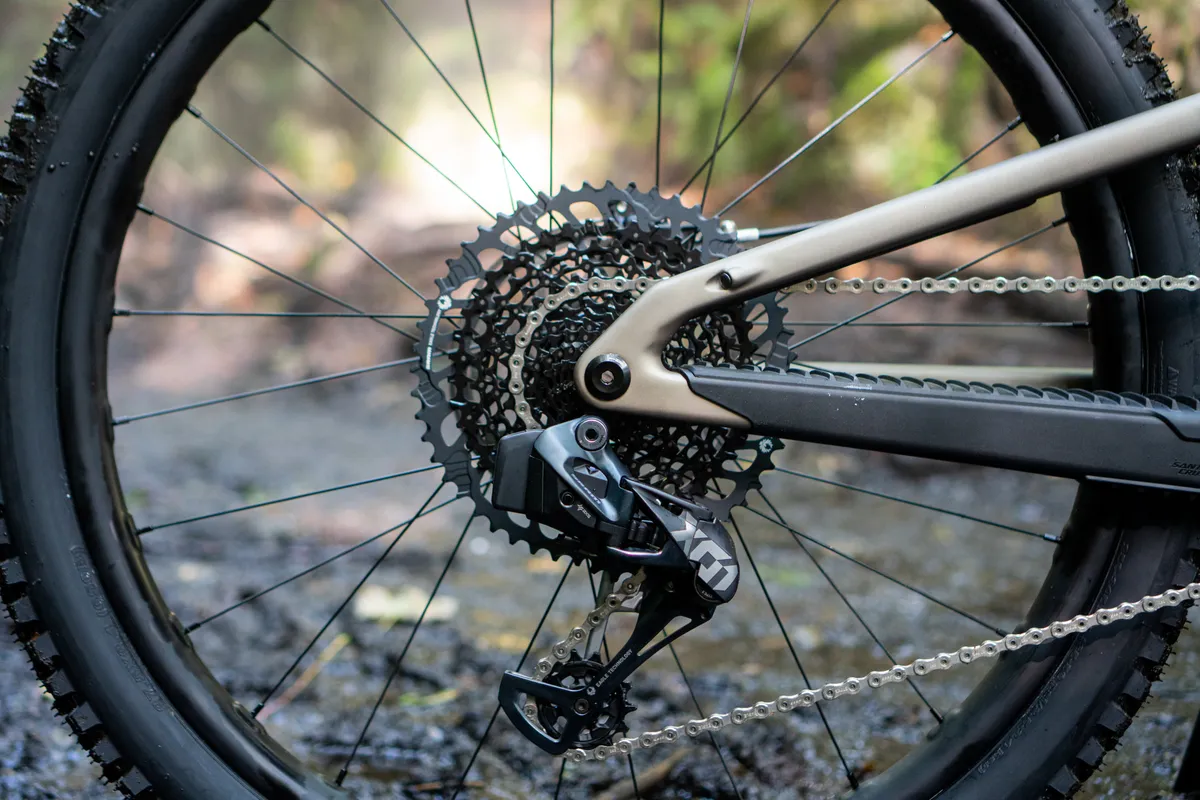
Shimano has arguably been playing catch-up to SRAM’s Eagle drivetrains over its last couple of generations of mountain bike drivetrains.
SRAM was the first to push 1x drivetrains, wide-ranging 10-50t cassettes and wireless electronic groupsets.
Shimano, on the other hand, seems to have waited to witness the reception to these developments before jumping on the bandwagon.
It still doesn’t have its own 12-speed electronic drivetrain (well, it does in the form of XT Di2 M8150, but this is only for electric bikes) and is yet to embrace wireless shifting off-road.
If this rear-derailleur design proves to have tangible performance benefits over current two-pulley and cage derailleurs, it could heavily influence further drivetrain designs. This is exactly the one-two punch Shimano needs.
Of course, this rear derailleur might never materialise. It’s not uncommon for brands to file patents that do not come to fruition, but this does show the possible future direction of Shimano’s next-generation tech.
Either way, we’re excited to see what comes next from Shimano.
